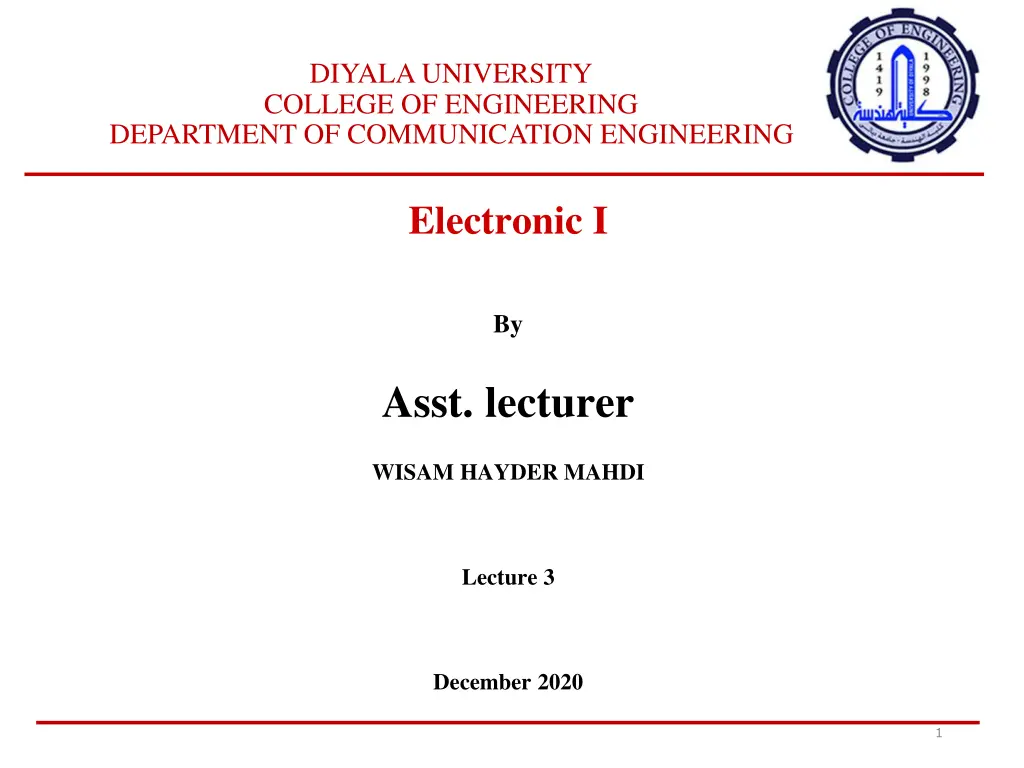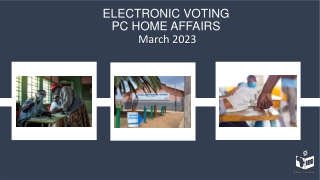
Understanding Common-Emitter Configuration in Electronic Engineering
Explore the concepts of common-emitter configuration in electronic engineering, focusing on DC current gain, beta values, and relationships between key parameters for transistor operation. Gain insights into the active region operation and practical implications of transistor characteristics.
Download Presentation

Please find below an Image/Link to download the presentation.
The content on the website is provided AS IS for your information and personal use only. It may not be sold, licensed, or shared on other websites without obtaining consent from the author. If you encounter any issues during the download, it is possible that the publisher has removed the file from their server.
You are allowed to download the files provided on this website for personal or commercial use, subject to the condition that they are used lawfully. All files are the property of their respective owners.
The content on the website is provided AS IS for your information and personal use only. It may not be sold, licensed, or shared on other websites without obtaining consent from the author.
E N D
Presentation Transcript
DIYALA UNIVERSITY COLLEGE OF ENGINEERING DEPARTMENT OF COMMUNICATION ENGINEERING Electronic I By Asst. lecturer WISAM HAYDER MAHDI Lecture 3 December 2020 1
Active Region Operation The collector current, is comprised of two components: the majority and minority carriers as indicated in Fig. 8-2. The minority-current component is called the leakage current and is given the symbol ???(??current with emitter terminal Open). The collector current, therefore, is determined in total by Eq. [8.2]. 2
Common-Emitter (CE) Configuration Example: Determine the dc current gain DC a transistor where ??= 50 ? and ??= 3.65 ??. ?? ??=3.65?? ??= ??+ ??, ??= 3.65 ?? + 50 ? = 3.7 ? From common base : From Eqs. [8.1] and [8.4], we obtain DCand the emitter current ??for 50 ?= 73 DC DC= 4
Common-Emitter (CE) Configuration In the dc mode the levels of ??and ??are related by a quantity called beta ( dC) and defined by the following equation: Where ??and ?? are the levels of current at the point of operation. For practical devices the levels of ??typically ranges from about 50 to over 500, with most in the mid range. 5
Common-Emitter (CE) Configuration On specification sheets ??is usually included as ?? with h derived from an ac hybrid equivalent circuit. For ac situation an ac beta ( ??) has been defined as follows: The formal name for ( ??is common-emitter, forward-current, amplification factor and on specification sheets ( ??is usually included as ??. 6
Common-Emitter (CE) Configuration A relationship can be developed between and using the basic relationships introduced thus far. Using = ??/??we have ??= ??/ , and from = ??/ ?? we have ??= ??/ . Substituting into ??= ??+ ??we have ??/ = ??+ ??/ and dividing both sides of the equation by ??will result in 1/ =1+1/ or = + = ( +1) so that 7
Common-Emitter (CE) Configuration In addition, recall that ????= ????/(1 ) but using an equivalence of 1/(1 ) = +1 derived from the above, we find that ????= ( +1) ????or Beta is particularly important parameter because it provides a direct link between current levels of the input and output circuits for CE configuration. That is, 8
Common-Emitter (CE) Configuration and since ??= ??+ ??= ??+ ??we have 9
Common-Collector (CC) Configuration: The third and final transistor configuration is the common- collector configuration, shown in Fig. 1 with npn and pnp transistors. The CC configuration is used primarily for impedance-matching purposes since it has a high input impedance and low output impedance, opposite to that which is true of the common-base and common-emitter configurations. 10
Common-Collector (CC) Configuration: For the CC configuration the output characteristics are a plot of emitter (output) current (?? versus collector-to-emitter (output) voltage (???), for a range of values of base (input) current (??). The output current, therefore, is the same for both the common- emitter and common-collector characteristics. There is an almost unnoticeable change in the vertical scale of ?? of the common-emitter characteristics if ??is replaced by ?? for the common-collector characteristics (since 1, ?? ??). 11
Common-Collector (CC) Configuration: Fig. 1 12
DC Biasing Circuits of BJTs Basic Concepts: The term biasing appearing is an all-inclusive term for the application of dc voltages to establish a fixed level of current and voltage. For transistor amplifiers the resulting dc current and voltage establish an operating point on the characteristics that define the region that will be employed for amplification of the applied signal. Since the operating point is a fixed point on the characteristics, it is also called the quiescent point (abbreviated Q-point). 13
DC Biasing Circuits of BJTs By definition, quiescent means quiet, still, inactive. Fig. 9-1 shows a general output device characteristic with four operating points indicated. The biasing circuit can be designed to set the device operation at any of these points or others within the active region. The maximum ratings are indicated on the characteristics of Fig. 9-1 by a horizontal line for the maximum collector current (?????and a vertical line at the maximum collector- to-emitter voltage (??????). 14
DC Biasing Circuits of BJTs The maximum power constraint is defined by the curve (?????in the same figure. At the lower end of the scales are the cutoff region, defined by (?? 0 A, and the saturation region, defined by (??? (???(???). 15
DC Biasing Circuits of BJTs Fig. 9-1 16





















